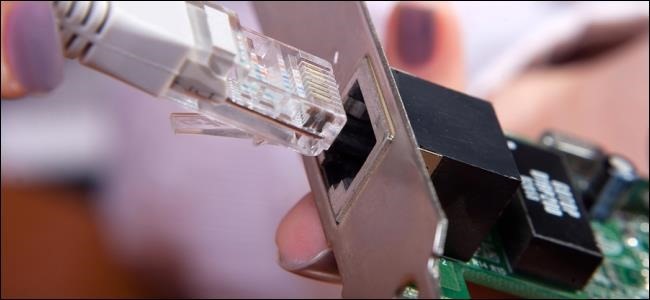
A device’s MAC address is assigned by the manufacturer, but it’s not to hard to change—or “spoof”—those addresses when you need to. Here’s how do do it, and why you might want to.
Each network interface connected to your network—whether it’s your router, wireless device, or network card in your computer—has a unique media access control (MAC) address. These MAC addresses—sometimes referred to as physical or hardware addresses—are assigned in the factory, but you can usually change the addresses in software.
What MAC Addresses Are Used For
At the lowest networking level, network interfaces attached to a network use MAC addresses to communicate with one another. When a browser on your computer needs to grab a web page from a server on the Internet, for example, that request passes down through several layers of the TCP/IP protocol. The web address you type gets translated to the IP address of the server. Your computer sends the request to your router, which then sends it out onto the Internet. At the hardware level of your network card, though, your network card is only looking at other MAC addresses for interfaces on the same network. It knows to send the request to the MAC address of your router’s network interface.
In addition to their core networking use, MAC addresses are often used for other purposes:
- Static IP Assignment: Routers allow you to assign static IP addresses to your computers. When a device connects, it always receives a specific IP address if it has a matching MAC address
- MAC Address Filtering: Networks can use MAC address filtering, only allowing devices with specific MAC addresses to connect to a network. This isn’t a great security tool because people can spoof their MAC addresses.
- MAC Authentication: Some Internet service providers may require authentication with a MAC address and only allow a device with that MAC address to connect to the Internet. You may need to change your router or computer’s MAC address to connect.
- Device Identification: Many airport Wi-Fi networks and other public Wi-Fi networks use a device’s MAC address to identify it. For example, an airport Wi-Fi network might offer a free 30 minutes and then ban your MAC address from receiving more Wi-Fi. Change your MAC address and you could get more Wi-Fi. (Free, limited Wi-Fi may also be tracked using browser cookies or an account system.)
- Device Tracking: Because they’re unique, MAC addresses can be used to track you. When you walk around, your smartphone scans for nearby Wi-Fi networks and broadcasts its MAC address. A company named Renew London used trash bins in the city of London to track people’s movements around the…
The post How (and Why) to Change Your MAC Address on Windows, Linux, and Mac appeared first on FeedBox.